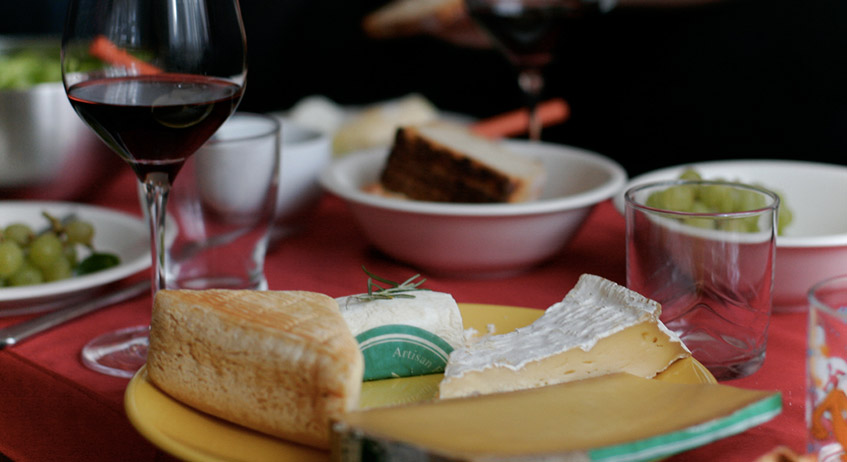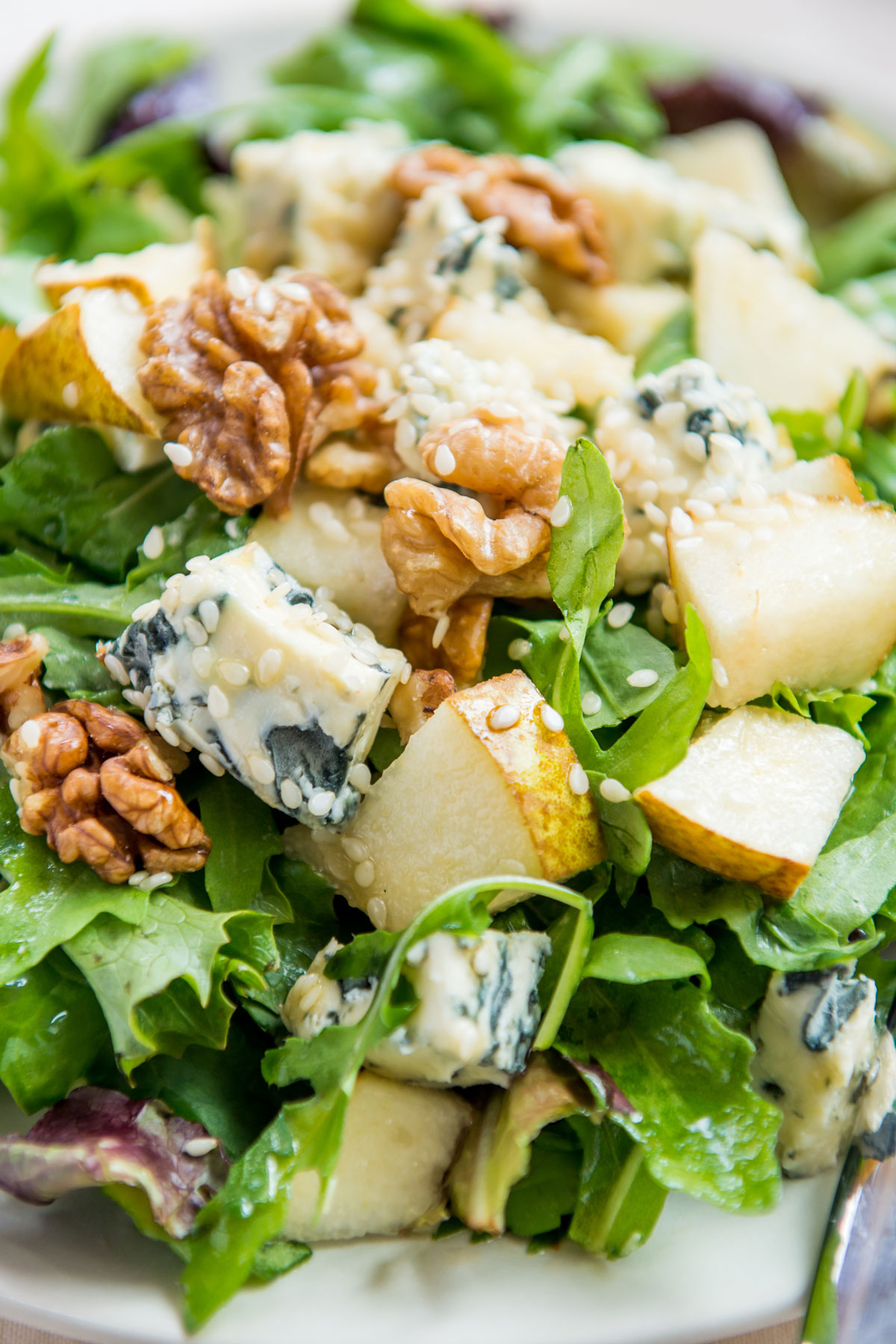
Delicious French winter salads
Until shamefully late in adult life, I’d regarded salads as a sort of non-food: unfilling, devoid of flavour, and eaten only by feeble dieter-types as a way of advertising that they hate their bodies. Choosing to eat a salad over any other meal would be tantamount to holding up a white flag to show that you had given up on gastronomic pleasures or were just a plain old-fashioned masochist.
In fairness, my exposure to salads growing up in Scotland had been unfavourable. They invariably consisted of 95% iceberg lettuce, quarters of tomatoes as cold and unyielding as your stepmother’s heart, and slices of cucumbers which, despite being mainly water, manage to taste foul, like a culinary yellow snow. These would be doused in either “French dressing” – a greasy, bitter fawn-coloured substance with flecks of dried herbs in it – or salad cream, a cruel version of mayonnaise where the deliciousness is replaced by vinegar.
To accompany this pile of crunchy despair you could have a boiled egg, ham or a rectangle of cheddar – all yummy enough, but better served in between two slices of buttered bread. With this introduction, was it any wonder that I looked askance at salads and viewed those eaters-of with derision?
Of course, saying that you don’t like salads based on a poor early impression is like saying you don’t like David Bowie’s entire catalogue because The Laughing Gnome is dreadful. I eventually realised that three meals a day based around starchy breads, pasta, rice or potatoes left me feeling bloated and heavy; I wanted the strong flavours and fats that commonly go along with these ingredients but without the need for a nap afterwards. And this is where the genius of salad revealed itself to me. You can have all your favourite cheese, meats, nuts, fish and eggs – just have them with leaves instead of carbs. Better still, vary your veggies (raw AND cooked!), throw in some fruit, seeds, and your own dressing. So much fresh, punchy flavour and zero stomach ache. I even learned how to enjoy cucumber.
I certainly became a salad-fan in France but I’m not sure to what degree France can be credited and where plain growing up and making better choices is responsible. Credit where it’s due, some of my absolute favourite salads are French. They’re based on salad leaves or grains mixed with classic French ingredients, a compromise that leaves your tastebuds satisfied without the sluggish after effects of a full-on stodgefest.
Before we get stuck in, it’s worth taking a moment to consider what makes a salad wintery? In today’s world we can buy summer vegetables like tomatoes and peppers in supermarket in January – but that doesn’t mean that we should. In compiling this list, I’ve tried to stick with leaves that are in season in winter months, like watercress and endives, though these can be adapted to suit preference or availability.
First up, and dearest to my heart, is endives with blue cheese and walnuts. It was the first salad that my husband made for me and – 10 years on – I love it every time. Eaten alone, endives are as bitter as your ex’s tears, but when combined with a forthright blue cheese, their sharpness finds its perfect foil with neither flavour dominating. Like an adorably mismatched pair of cops, detectives Endive and Blue Cheese work brilliantly together. Add in the sidekick walnut for sweetness, crunch and more fat, splash over a vinaigrette, and you have yourself a blockbuster buddy movie. Or delicious salad. (I get carried away with metaphors.) Choose a blue cheese that’s both soft and crumbly. Roquefort is a popular choice here but, honestly, I won’t tell anyone if you use Stilton.
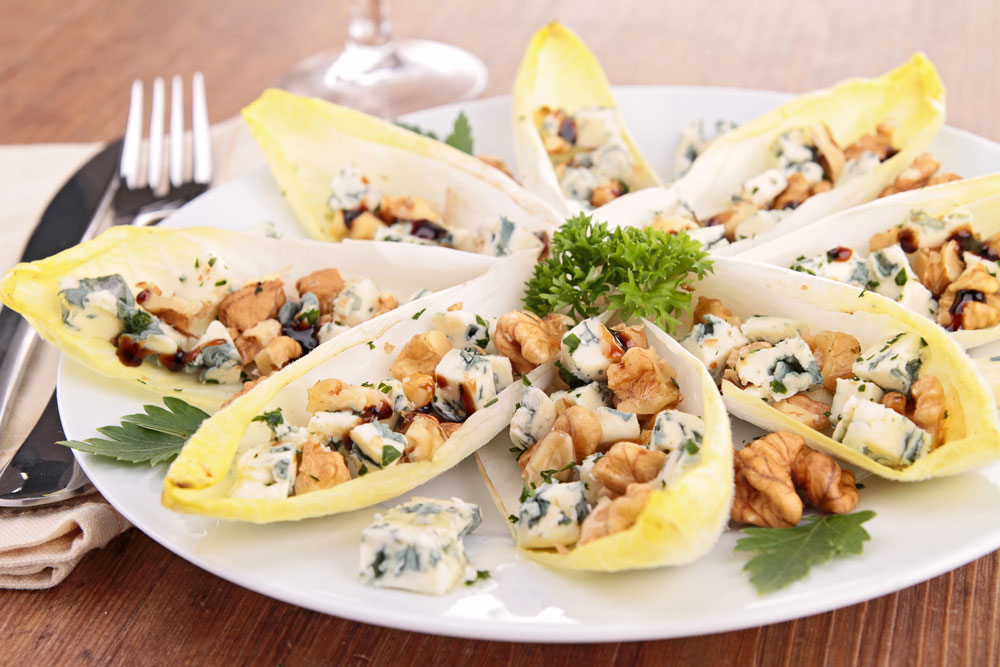
Can’t be persuaded to get on the endive party bus, or simply looking for a bit of variety? I see ya. You’ll get similar thrills with a blue cheese, pear, walnut and watercress salad. Watercress is another winter hero salad. Like endives, it packs a punch but it’s more peppery than bitter and has a soft, not crispy, leaves. Walnuts and blue cheese are joined this time by chopped pear which brings a burst of juicy sweetness, and some crunch too. Replace the blue with goat’s cheese, and the pear with apple, if you like. Both go wonderfully well with nuts and watercress.
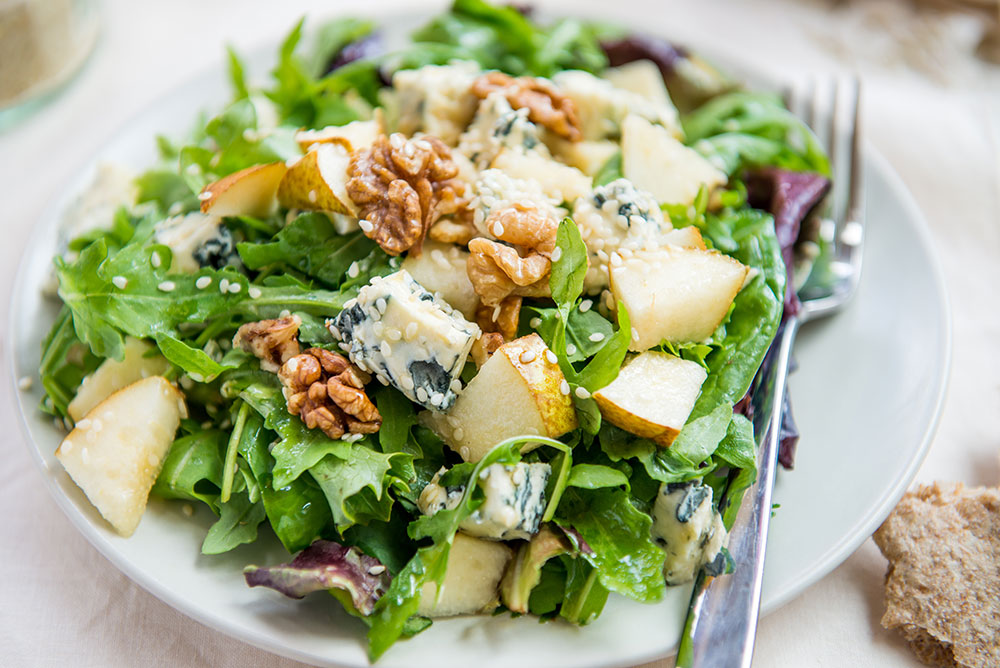
Blue cheese, pear, walnut and watercress salad
While we’re on the subject of goat’s cheese, it would be remiss of me not to mention the French starter classic of grilled goat’s cheese served with a green salad. This simple dish can be eaten at any time of the year, just swap summer lettuce for watercress in the colder months. All you need to do is place a sliced round of goat’s cheese on a baking tray or slice of bread, and bung it under the grill until the top become golden and bubbly. Drizzle dressing over the cheese and leaves, then mop up the mingled cheese goo and salad dressing mess with baguette or toast.
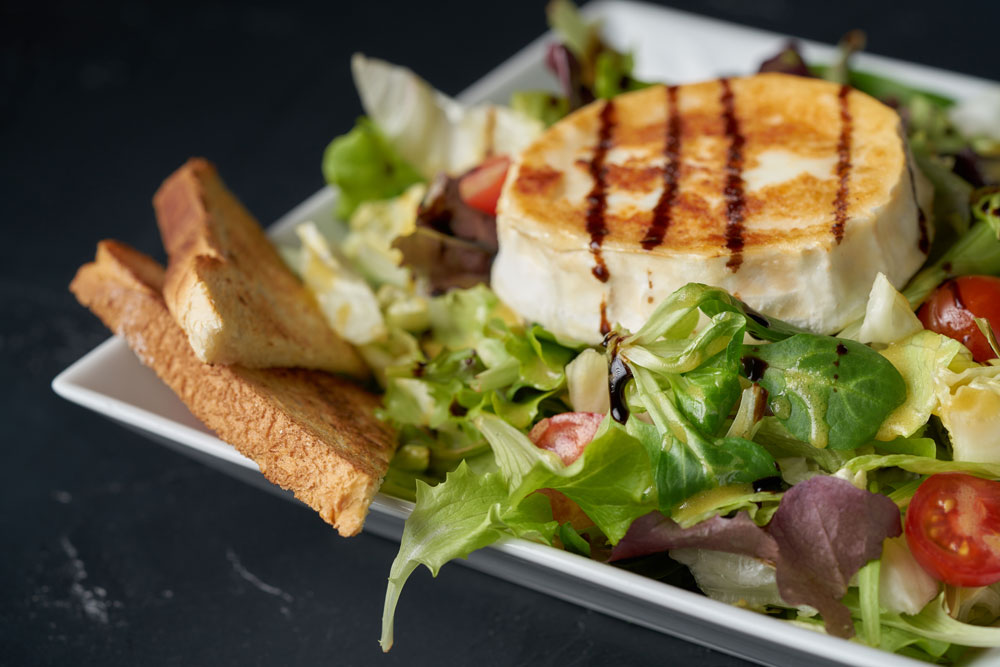
Grilled goat’s cheese salad
Leaves are all fine and well but sometimes you want – need – something more substantial, and this is where lentils come in. Consider me a big lentil fan. Whether in the traditional Scottish lentil soup that fueled my childhood, or the dhals that no Indian meal is complete without, for me they represent warmth and comfort. In France, they favour green lentils, particularly Puy lentils which are a small, firm variety that keep their shape once cooked and are ideal in salads.
A bistro classic, salade de lentilles vertes du Puy, has many incarnations but the essential method remains the same: cook the dry lentils in a broth flavoured with a bouquet garni and onion (some recipes add carrots or bacon fat for extra oomph), drain the lentils, then add to a bowl with a vinaigrette, finely chopped shallots and crispy lardons. Eat warm or at room temperature.
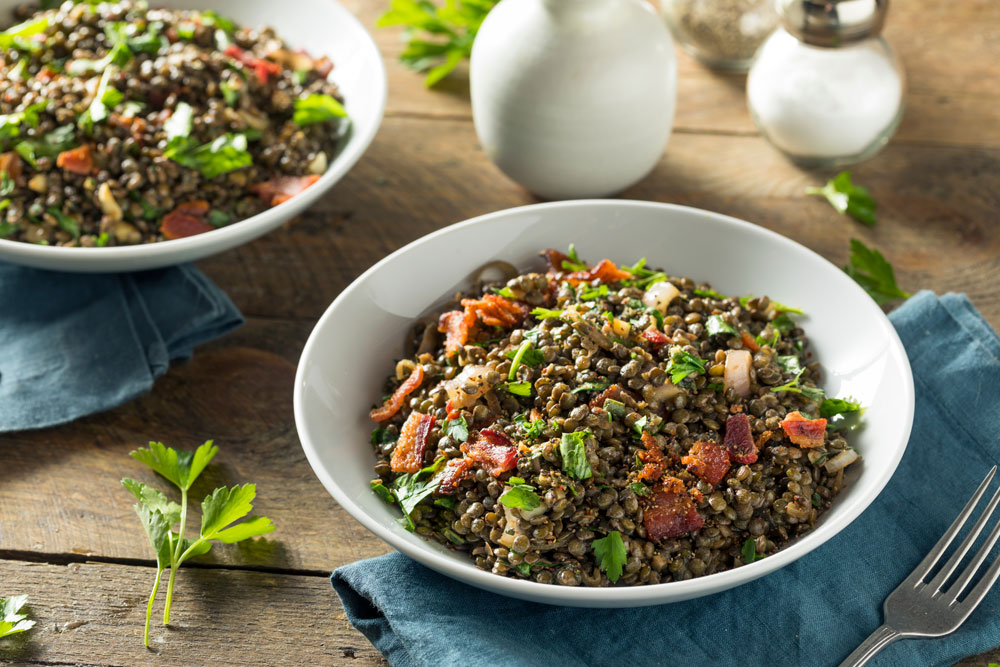
Puy lentils salad with bacon
Using this same basic method you can change up the ingredients to create a vegetarian or vegan version, or simply to fit what you have in your kitchen. Our old pals goat’s cheese and walnuts work well with lentils and red cabbage (pictured) or try them topped with a poached egg for a very satifying lunch.
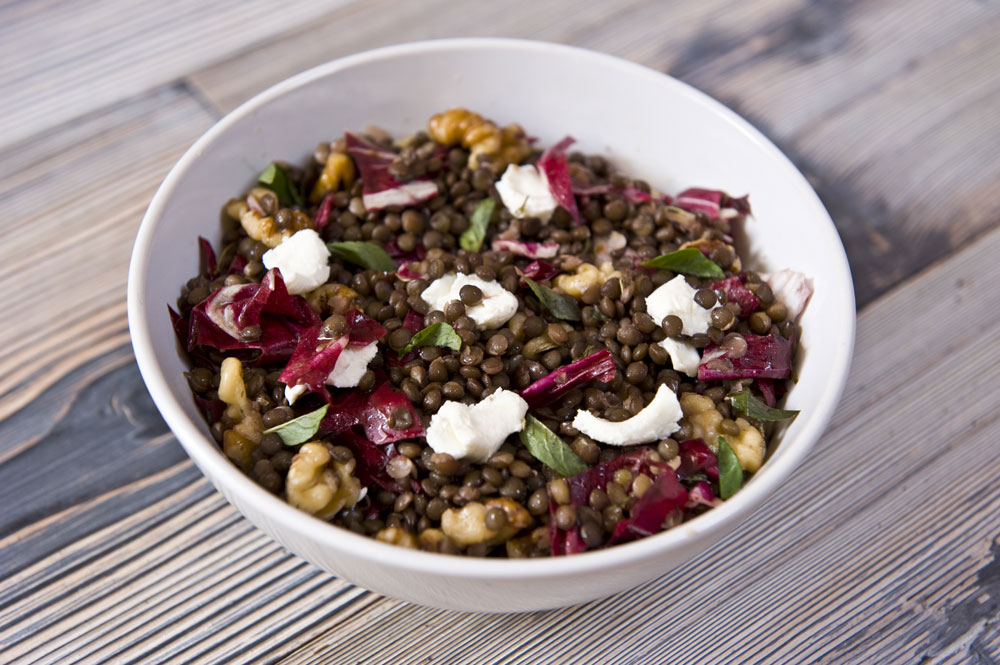
Lentils with goat’s cheese, red cabbage and walnuts
Like endive, beetroot is a vegetable I had little to do with before moving to France. Prior to this, I’d only eaten beetroot pickled and was suspicious of the cold damp blob that threatened to stain everything in sight. Nowadays beetroot is a staple at the dinner table and I’ve come to love its sweet minerally taste. We usually buy it precooked and eat it with a simple dressing – with or without chevre and walnuts – or try mixing cooked beetroot with apples and a hint of onion. Eat it raw and grated with carrots or roasted and added to lentils.
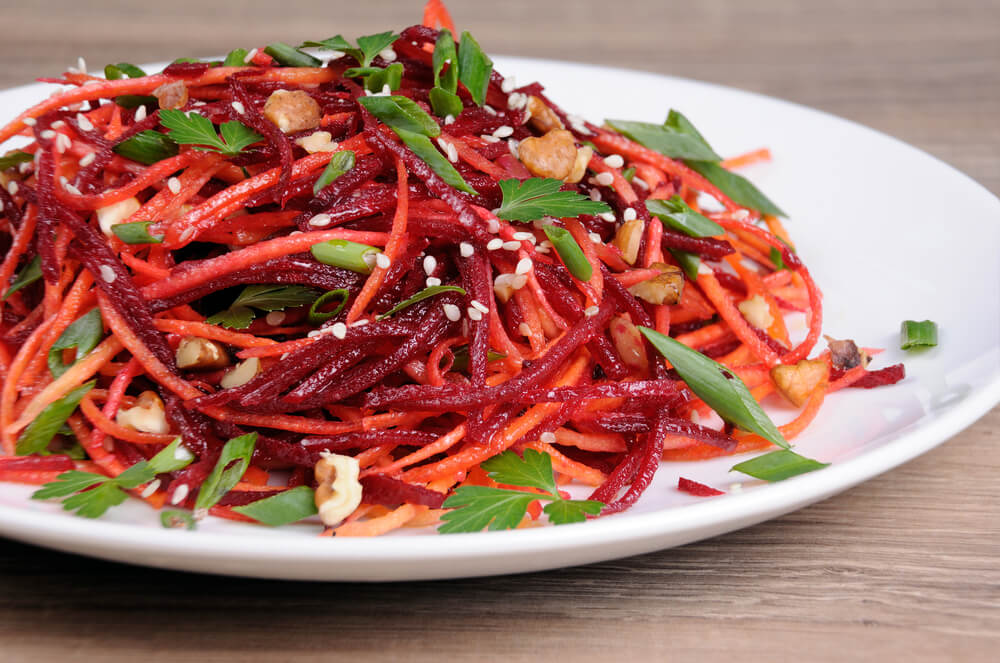
Grated beetroot and carrots
Up to now we’ve been pretty healthy (abundant cheese and nuts aside) so I think it’s fair to add some bulk to our salads. It is winter after all. That’s right, it’s time to eat potatoes. Now potato salad might seem more like a summer barbecue sidedish but this potato salad with saucisson works well year round. Instead of mayonnaise, boiled potatoes are coated in vinaigrette and smoked, peppery saucisson (or salami) is sliced and added. Onions, mustard seeds and dill give it a Scandi flavour that belies its origins in the east of France.
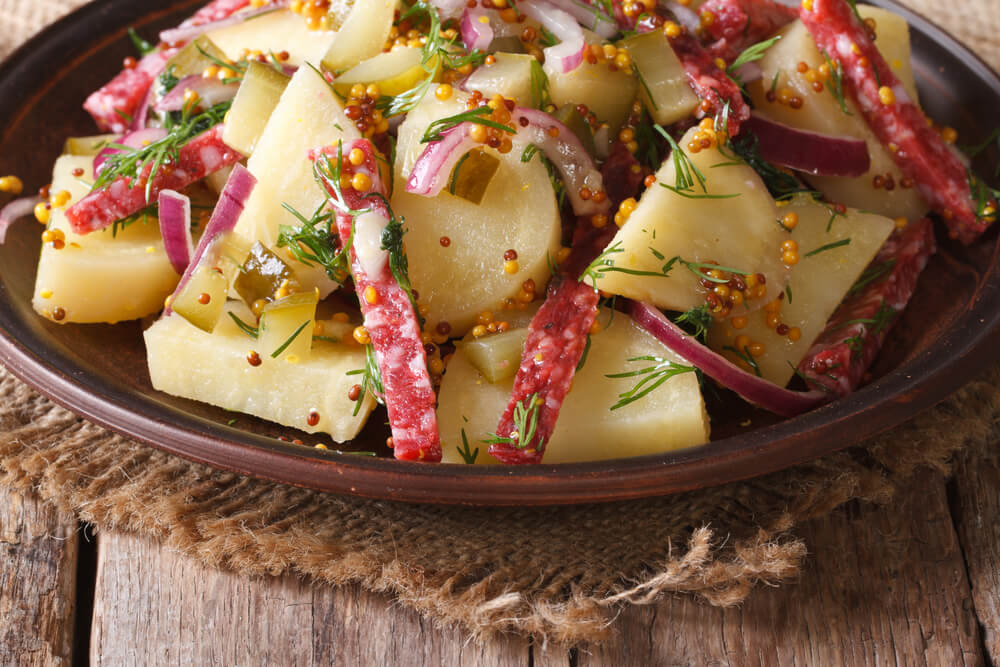
Potato salad with saucisson and mustard vinaigrette
Our final salad is possibly the least wintery of all. In truth, salade périgourdine is eaten year round and for many it will have associations with summer holidays in its birthplace in the south-west of France, enjoyed with a glass of chilled rosé. For me, up north in the Paris region though, foie gras is something I associate with the colder months as I eat it rarely, most often at Christmas and New Year (served with a confit of guilt at its method of production). Indeed, this is no every day need-a-quick-filler-in-my-lunchhour salad. There are as many recipes for salade périgourdine as there are angry people on the internet. Generally speaking though, the recipe calls for the aforementioned foie gras, duck breast, confit of duck and even duck’s gizzards, smoked ham, fried rounds of potatoes or croutons and some type of salad leaves – this is what makes it a salad and not a heart attack waiting to happen. Indeed, the leaves are necessary to cut through the artery-clogging fun factory that makes up the rest of the plate – at least in terms of your palate, your doctor would probably disagree. It’s a once-in-a-blue-moon treat that makes mockery of the notion that salads are bland or unfilling. (Did you hear that, previous me?) It’s one I’ll order in a brasserie where it feels like a lighter alternative to my other favourite, steak-frites with béarnaise sauce.
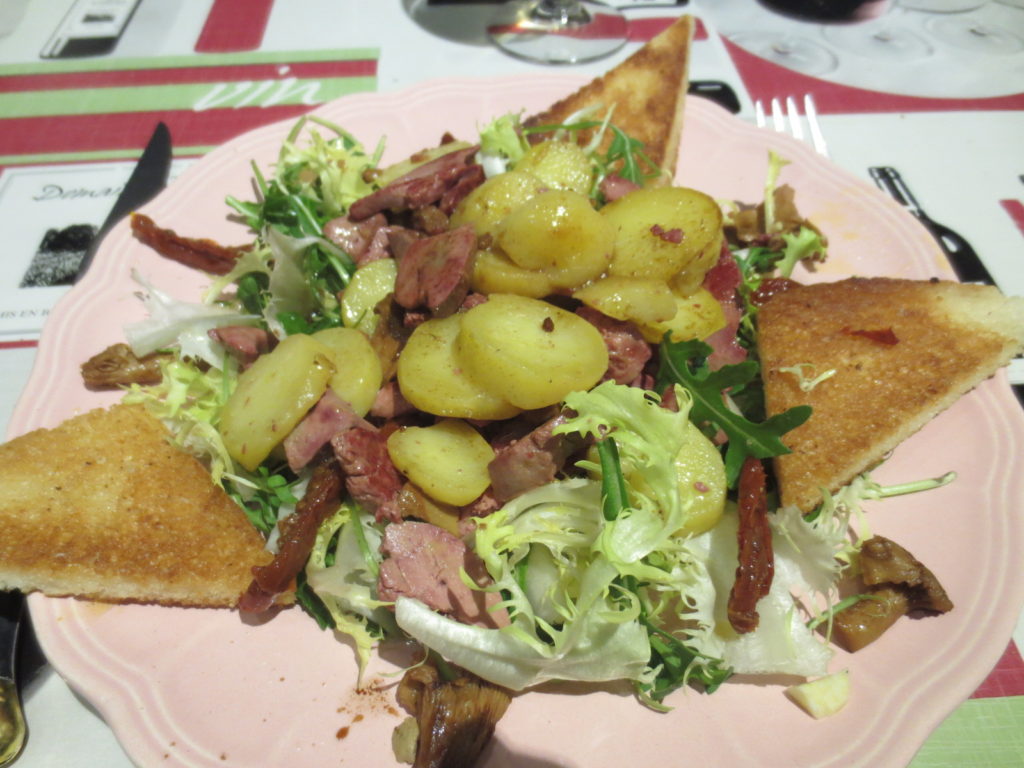
Arnaud 25, CC BY-SA 3.0



